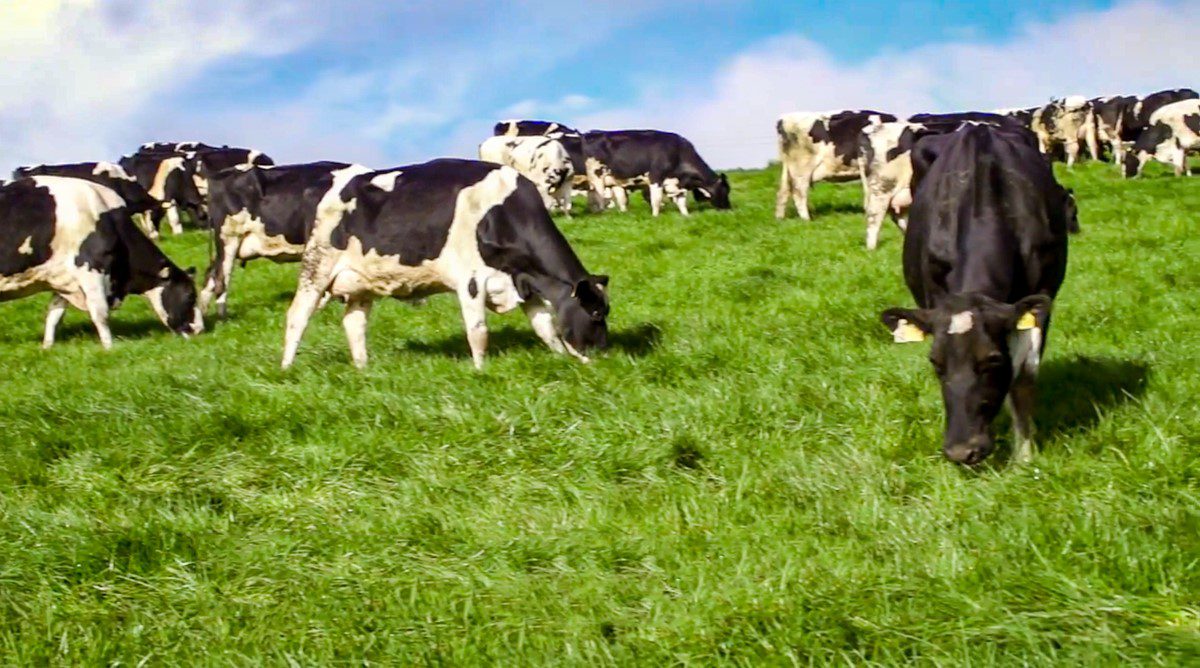As part of the audit process, farmers must complete the Bord Bia Sustainability Survey, in which they report on farm management activity.
The survey is used in conjunction with data from AIMs, ICBF (for beef farms), and milk production data (for dairy farms), to calculate each individual farm’s carbon footprint.
It is also used to determine if a farm’s herd meets the threshold for the grass-fed standard (at least 90% grass based on a fresh weight basis).
The survey is seven pages long with approximately 60 questions. The questions cover a range of topics, from animal grazing to employee welfare. It should take approximately 30 minutes to complete.
The survey must be completed before your audit using the online portal at farm.bordbia.ie. Alternatively, you can contact the Bord Bia Helpdesk on: 01 524 0410 (available Monday to Friday, 9:00a.m to 8:00p.m) and they will be able to assist you.
A new facility is currently being worked on that will allow farmers the option of entering the data from the previous year from January onwards, even where an audit is not due.
It is important that the information provided is accurate and complete to obtain correct carbon footprint and grass-fed calculations.
This article will look at the five main sections of the report that relate to the carbon footprint and grass fed calculations.
Note: All data provided must be from the previous calendar year, for example if your audit takes place in November 2021, you report from the previous January to December 2020.
Housing and turnout
Farmers are asked to provide the average date that the herd was turned out in the spring, and when cattle were housed in the winter. Farmers must report any additional housing days during the grazing season.
This information is used to identify the time of year animals are housed and when they have access to fresh grass or conserved forage.
Manure management
Farmers must report on the approximate date of slurry spreading, what percentage of slurry was spread and the area (in hectares or acres) spread.
Farmers must also report how the slurry is stored and what percentage is stored in each structure e.g. 40% in a slatted tank, 20% in an uncovered tank, 40% in a lined lagoon.
Any imported slurry spread must be reported, plus the type of slurry handling system used, i.e. splash plate.
This information is used to calculate the impact of manure storage and application on the farm’s carbon footprint. The method and timing of slurry can influence farm emissions.
Low Emission Slurry Spreading (LESS) Equipment, e.g. trailing shoe, can be used to decrease the loss of nitrogen to the atmosphere at the time of spreading.
The application of slurry on mild days with little sunshine directly onto the surface of the soil using a trailing shoe results in greater availability of nitrogen to the grass roots than if it were applied using a splash plate.
Feeding
The rates of additional feed in the form of concentrates/straights and whole crop are used in the carbon footprint and grass fed calculations. The emissions of feed are influenced by the source and type of individual ingredients.
Bord Bia uses a weighted emissions factor for compound feed based on typical ingredients in the feed recipe. The source countries for the ingredients are also factored in and are based on national import statistics.
Farmers must report the number of weeks that cattle (excluding dairy cows) are fed compound rations while indoors and outdoors; plus the average quantity fed/animal/day in kg.
For dairy cows, farmers are asked to record compound rations fed per animal/day for each month.
If any alternative forages are fed (i.e. maize silage, whole crop, kale, fodder beet etc.) the farmer should report the average rate fed per animal/day in kg (all cattle, including dairy cows).
Farmers must also record any feeding of milk replacer or whole milk to calves.
Fertiliser
The type and quantity of artificial fertiliser applied, plus the area fertilised, is collected in the sustainability survey. This data is required to calculate the emissions associated with fertiliser production and application. The survey has been recently updated to include an expanded list of fertilisers, including a selection of protected urea options.
It is important to report fertiliser use as accurately as possible so that the farm feedback report can assist you in making more informed fertiliser use decisions to reduce fertiliser related emissions.
The application of protected urea in place of calcium ammonium nitrate (CAN) and straight urea can reduce greenhouse gas emissions and ammonia losses. A 71% reduction in nitrous oxide emissions can be achieved using protected urea.
The use of soil test results can be used to identify lime, nitrogen (N), phosphorus (P) and potassium (K) requirements of your soil and a nutrient management plan can be used to ensure that optimal soil fertility is maintained.
Energy use and renewables
Farm energy use contributes to approximately 5-8% of a farm’s carbon footprint. Farmers are asked to provide the quantity (in litres) of diesel or petrol used each year on the farm, and the kilowatt hours (kWh) of electricity used per year.
If farmers have any energy efficiency initiatives on the farm, such as heat recovery, low energy lighting, or energy consumption monitoring, this can be recorded in the survey.
Farmers can also report if any renewable energy is generated on farm.
Farmer feedback report
Once a farm is certified, a farmer feedback report is generated and dispatched to the farmer, typically within one week of certification.
The farmer feedback report includes the farm’s carbon footprint, the percentage change from the farm’s last audit, and compares the farm’s sustainability metrics, such as the carbon footprint, to farms of a similar system type.
The report can also be downloaded from farm.bordbia.ie using your herd number and PIN.
For further information or guidance, call the Bord Bia Helpdesk on: 01 524 0410 (available Monday to Friday, 9:00a.m to 8:00p.m).

